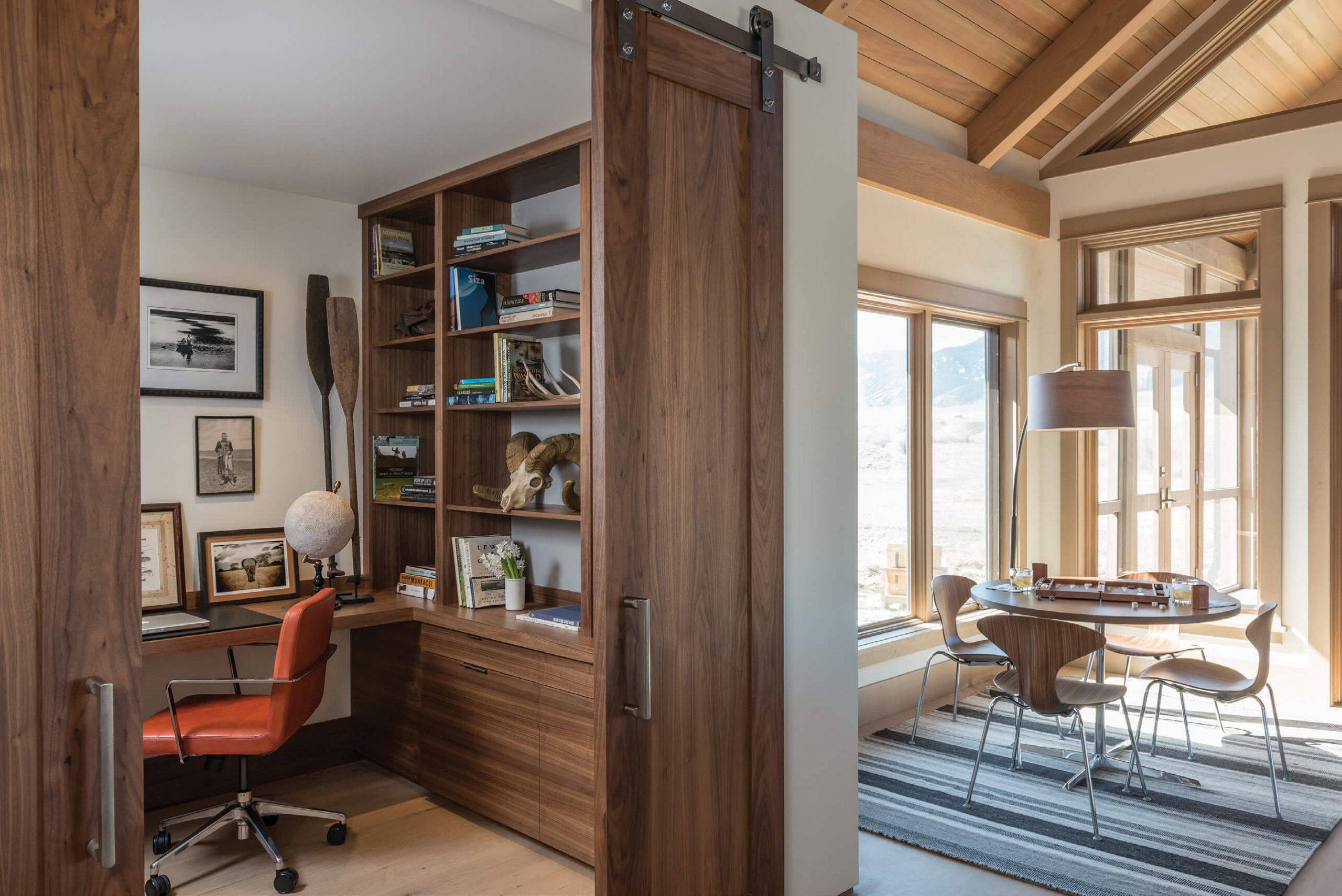
16 Apr Rethinking The Home Office
When COVID-19 hit and businesses around the world allowed people to work remotely, the home office took on a whole new meaning. Those spaces that were once used occasionally — or as storage for bills and other paperwork — are now some of the most-used rooms in the home, requiring them to be conducive to both productivity and creativity. And as many continue to work remotely, even post-pandemic, office design has become a hot topic.
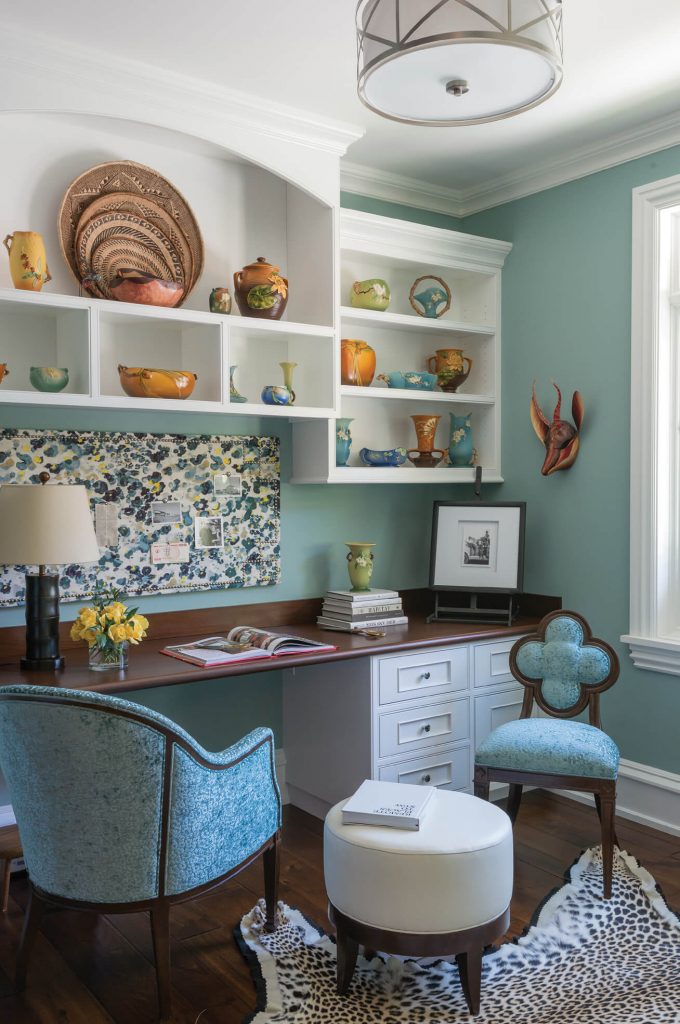
When choosing a color palette, look throughthe clothing in your closet to discover the colors you’remost drawn to and comfortable with, says Jeremiah Young,creative director for the Billings, Montana-based Kibler &Kirch. Then think about incorporating those into your home office design.
Montana-based interior designers Jeremiah Young, creative director for Kibler & Kirch in Billings, and Susie Hoffmann, owner and principal of Envi Design in Bozeman, agree that keeping yourself motivated is the key. “The first thing to think about is inspiration,” Young says. “You need to be inspired to do the work and be your best, high-functioning self. I don’t think you can do that unless your environment is satisfying. I start with what truly inspires [someone] and build upon that.”
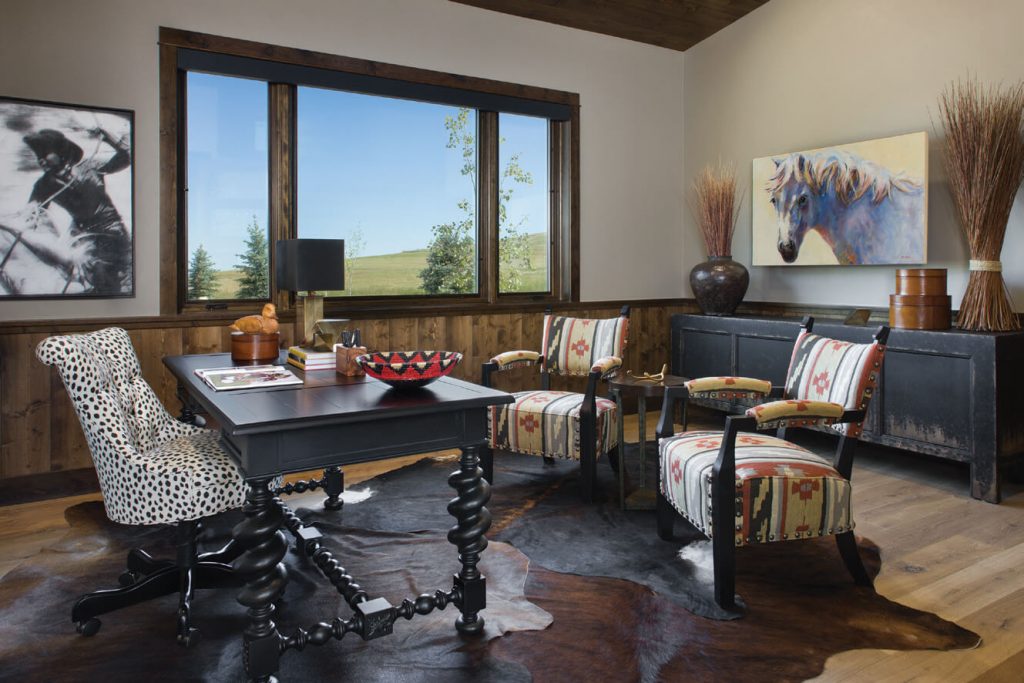
Young says that it’s important to include inspirational pieces to boost productivity, such as original works of art or photographs of loved ones.
Because inspiration can take different forms for different people, Young recommends considering why you are working. “Our space needs to remind us of why we are there — is it [for the] family, or for a particular goal?” If family is a motivating factor, he says that having photographs of loved ones or items that bring an emotional touchstone can be motivating. “On my desk, I have this old folding ruler that belonged to my grandfather and my great-grandfather,” Young says. “I can pick it up, and it connects me to something deeper and larger than myself. It’s easier to put things that are meaningful in your home office than an office you commute to. If we surround ourselves with meaning, then we leave ourselves open to inspiration. We focus on why we’re doing what we’re doing.”
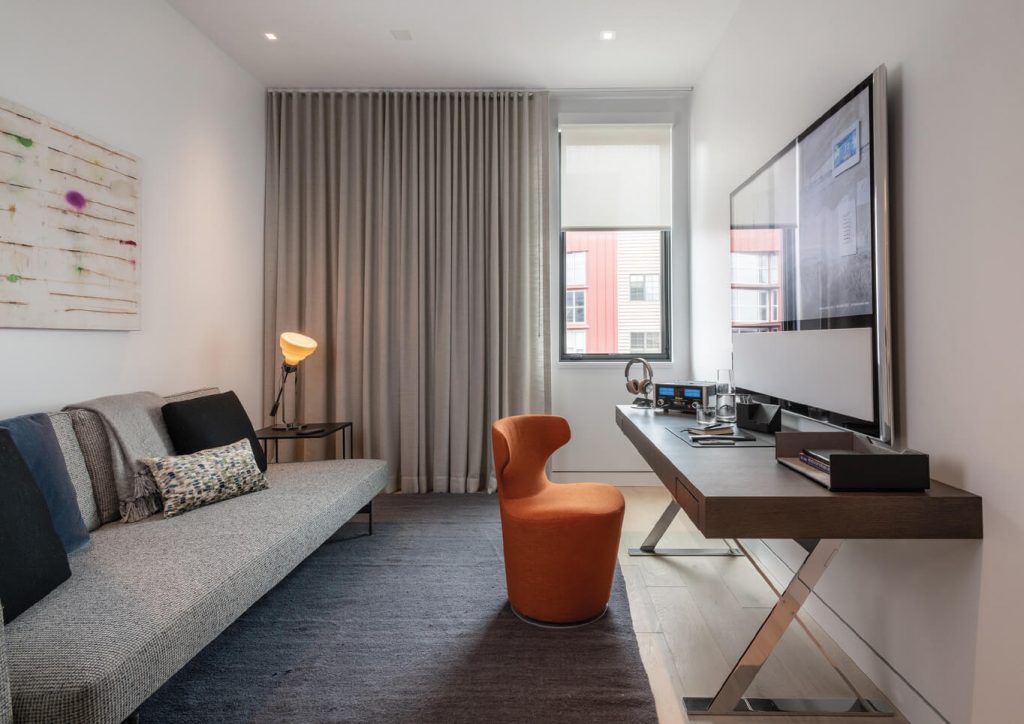
Hoffmann reminds clients to be aware of their backgrounds during online meetings.
The “new” home office brought on by the pandemic now also serves as a setting for video meetings, which involves presenting ourselves to the world in a way that we aren’t — or weren’t — familiar with. For Young, that’s another place to convey something authentic. “Think of it as an opportunity to put our best selves out there, rather than something that needs to be done,” he says. “On Zoom meetings, it stuns me that people don’t put more care into their environment.”
Hoffmann agrees, explaining that many clients are now asking for spaces that are TV-ready. “It’s important to be aware of what’s behind you,” she says. “I recommend an attractive background, like paneling, art, or a bookshelf to frame yourself. What’s in your office says a lot about who you are. People want a more composed look, showing more personality that says something about them.”
Other elements to consider include lighting (lamp light, general illumination, and natural light); a sense of harmony; a good desk chair; and overall function. “You need to be able to do what it is you need to do in that space,” Hoffmann says. “An office should accommodate your computer, devices, storage, and organization.”
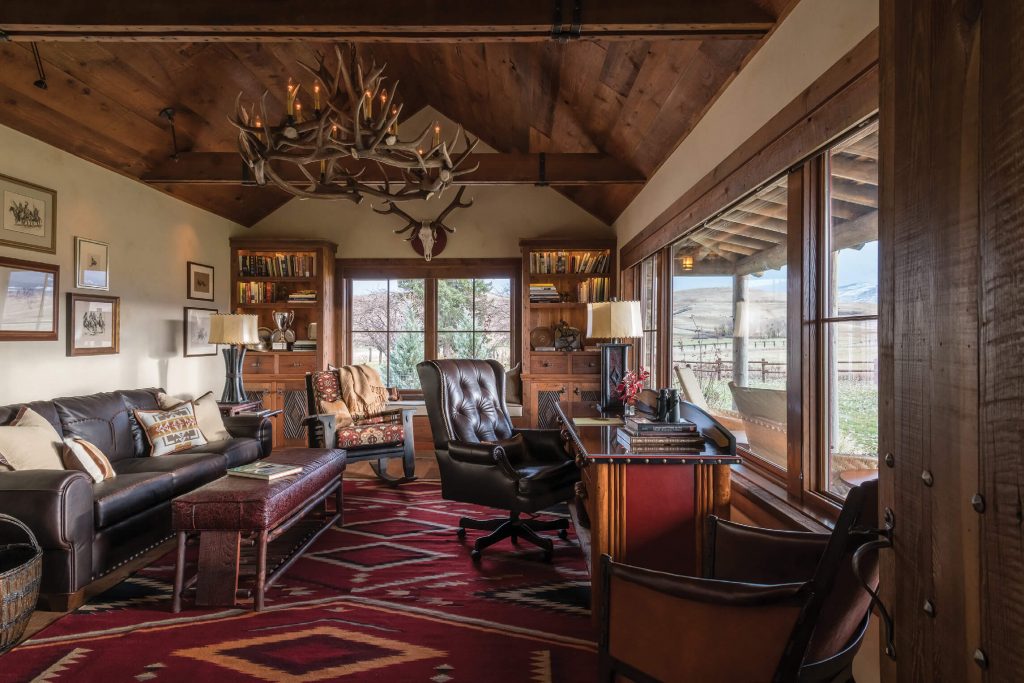
Inspiration can be found by situating a desk in front of a window with spectacular views, Young says.
While some people just require a desk and a laptop, others need storage or prefer a standing desk. “Being organized is huge,” Hoffmann says. “Start each day by giving yourself a clean palette. When we used to commute, we had that buffer, but now you have one minute to get into work mode. I would advise creating a ritual. I’ll take a few minutes to clean up my desk. … It’s a moment of preparation to set yourself up for a more productive work experience.” She also recommends keeping the office space separate from other rooms in the house if possible. “Designate a specific space that can be disruption-free,” she adds.
Color also plays a profound role in a productive space. When trying to figure what colors suit a person best, Young suggests that they look around their home. “What are the colors in your closet? Oftentimes those are the ones people feel comfortable in,” he notes. “If you have a lot of blues in your closet, you would likely enjoy being in a room with those colors. Color is as important as light.”
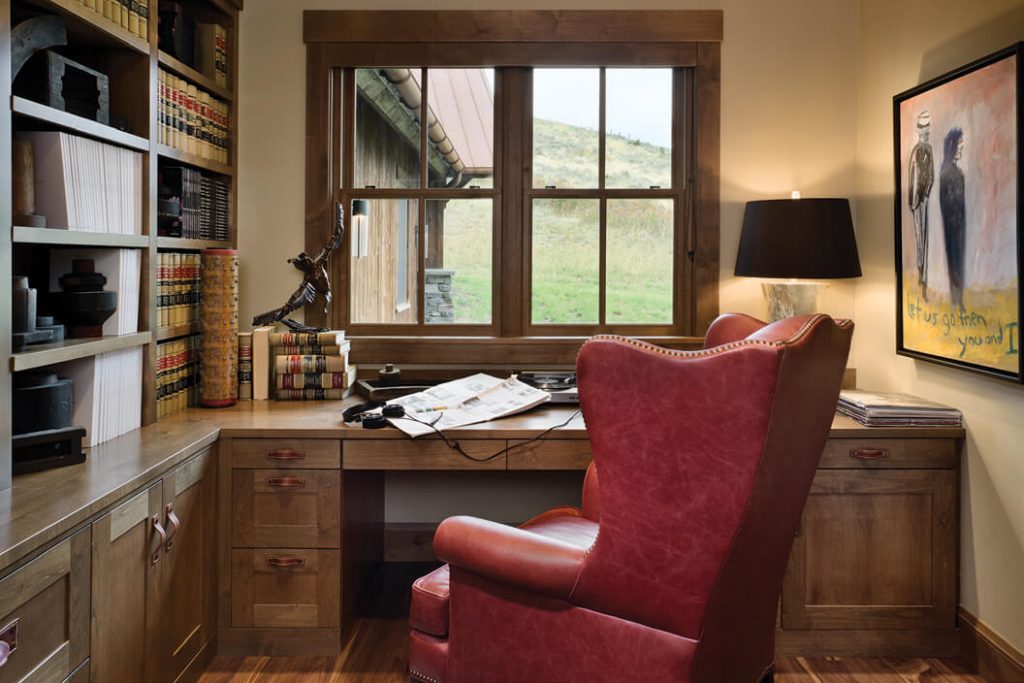
A cozy and comfortable workspace can relieve some of the stress brought on by the day.
Both Hoffmann and Young agree that art, especially original pieces, can be comforting, inspiring, and meditative. “I can’t imagine designing a space for someone that doesn’t include original art that speaks to them,” Young says. “I always try to have art that rewards a lifetime of viewing — something that reveals itself to you over time.”
A factor that’s often overlooked is sound, and for home office design, Young often uses sound-absorbing materials, such as drapery and rugs. “Comfort is what you feel, and good sound makes a space pleasant to be in,” he says.
Finally, it may be time to realize that the home office is here to stay. “At first it was okay to think, we’re just going to set this up until things go back to normal,” Hoffmann says. “If you haven’t done so, re-evaluate the space to see what’s is working. Function comes first, but it should also make you feel good — whether that’s adding some decorative elements, items that make you reflect or feel good, or a place to pause or meditate.”
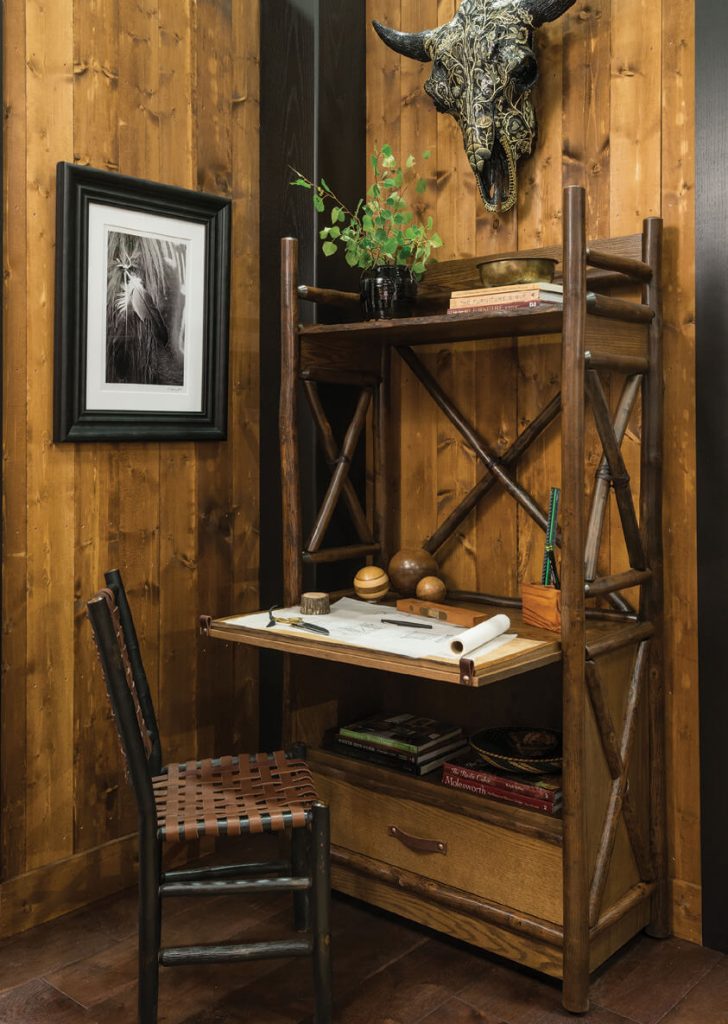
If you don’t have a separate room for a home office, finding the right furniture and decor can turn any nook into a productive space.
And working at home doesn’t mean you need to work all the time. Most importantly, both designers agree that you want to be able to turn it off at the end of the day. Organize for upcoming tasks, close the laptop, and turn off the lights. Tomorrow is another day.




No Comments